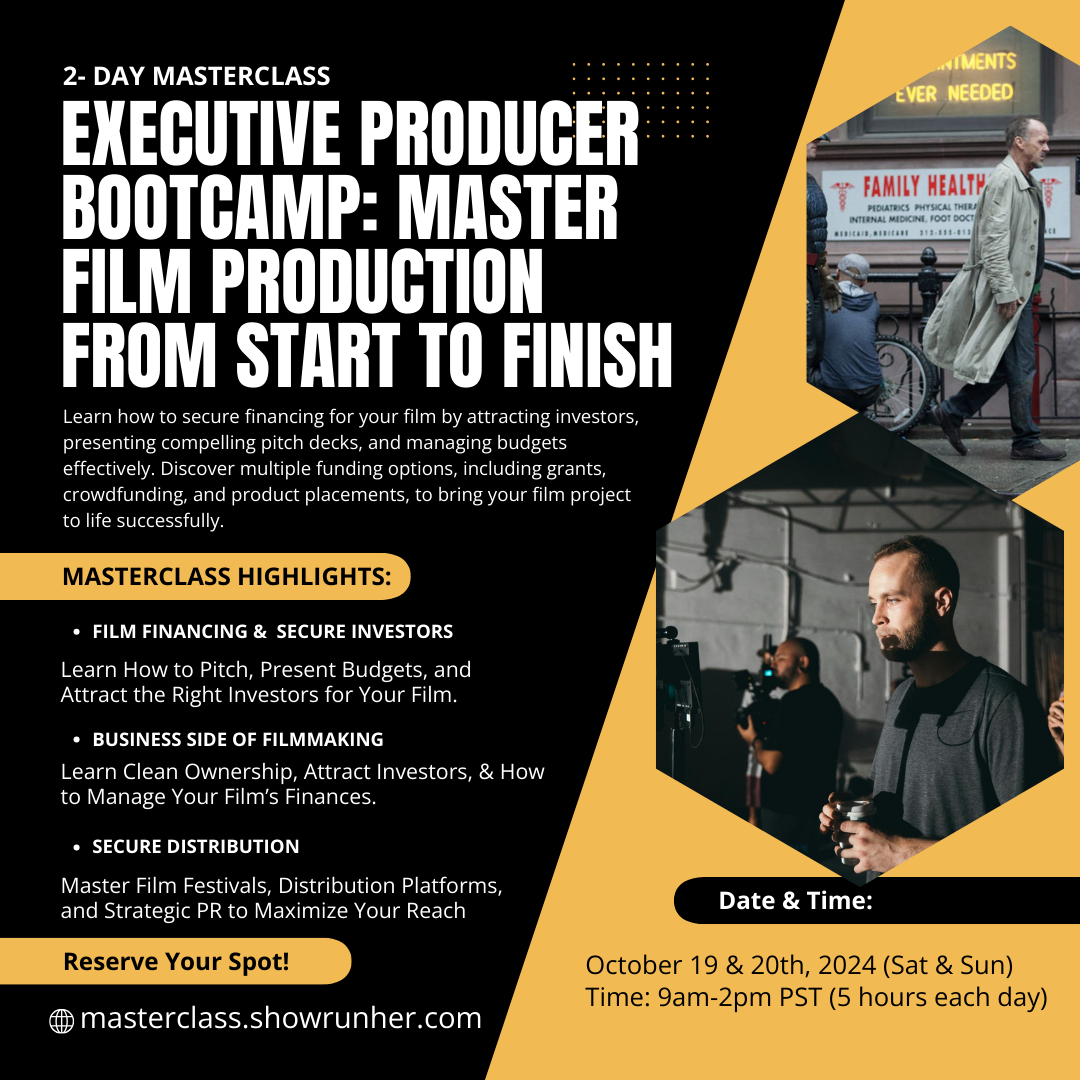DISCLAIMER: Netflix Originals: If Netflix is financing or co-producing your project, you must adhere to their content guidelines to meet their high standards for production quality.
👉🏾 Indie Films Acquired by Netflix: If you produce your indie film independently and aim to license or sell it to Netflix, the requirements are less strict. However, creating high-quality, future-proof content can significantly enhance your chances of acquisition by platforms like Netflix.
👉🏾 Netflix’s guidelines only apply if they are financing or producing your project as a Netflix Original.
😤 When I hear people say, “You don’t need to meet Netflix’s standards,” what I hear is, “I don’t care about quality because my story is good enough.” But who truly determines if your story or anything else is “good enough”? You? It’s natural to be biased toward our work, but not everyone will view it the same way.
With that in mind, quality should ALWAYS be the end goal and NETFLIX is a good standard to have.
Now let’s chat about Netflix and its sound!
When it comes to creating high-quality content for platforms like Netflix, sound is just as crucial as visuals. Good sound design can significantly enhance the storytelling experience, drawing viewers into the world you’ve created. Here are some best practices to keep in mind for live-action production sound:
1. Prioritize Location Sound
Capturing clean location sound during filming is essential. Use high-quality microphones and recorders to ensure you capture dialogue and ambient sounds effectively. Natural sound enhances the authenticity of your film, making the setting more believable. Always conduct sound tests in various locations to identify potential challenges and adjust your approach accordingly.
2. Use Professional Equipment
Investing in professional sound equipment is key. High-quality microphones (like shotgun and lavalier mics), boom poles, and portable recorders will help you achieve the best sound possible. Ensure your sound team is well-versed in using this equipment to maximize its potential. Additionally, familiarize yourself with digital audio workstations (DAWs) for seamless editing in post-production.
3. Plan Your Sound Design
Before filming, develop a sound design plan that aligns with your project’s vision. Consider how sound can enhance the narrative, from dialogue to ambient noise and sound effects. Work closely with your director and sound designer to create a cohesive soundscape that supports the emotional tone of your scenes. This proactive approach will help streamline the production process.
4. Monitor Sound Continuously
During filming, always monitor the sound using high-quality headphones. This allows you to catch any issues in real time, such as unwanted background noise or audio interference. Addressing these problems on set is much easier than trying to fix them in post-production. Encourage communication between the sound team and the rest of the crew to maintain a collaborative atmosphere.
5. Consider Sound Mixing and Effects
In post-production, sound mixing and effects play a crucial role in enhancing the auditory experience. Layering sound effects, such as footsteps, doors creaking, and environmental noises, can create a more immersive atmosphere. Pay attention to the balance of dialogue, music, and sound effects, ensuring that each element complements the others without overwhelming the audience.
6. Utilize ADR and Foley Techniques
When location sound falls short, consider using Automated Dialogue Replacement (ADR) to re-record dialogue in a controlled environment. This can significantly improve clarity and consistency. Additionally, using Foley techniques—creating sound effects in post-production that sync with the visuals—can enhance the realism of your film. These techniques help to fill in gaps and enrich the overall sound landscape.
7. Test and Refine
Before finalizing your audio mix, conduct thorough listening tests with a diverse audience. Gather feedback to identify any areas that may need improvement. Refining your sound design based on constructive criticism can lead to a more polished final product.
Ensuring high-quality sound in live-action productions is essential for creating an immersive viewing experience. Netflix provides best practices to guide sound teams in achieving optimal audio quality. While specific equipment recommendations are not mandated, they suggest the following preferred equipment:
Preferred Sound Production Equipment:
Field Recorders:
- Sound Devices
- Zaxcom
- Sonosax
- Aaton Digital
Microphones:
- DPA
- Schoeps
- Sanken
- Sennheiser
- Neumann
- Countryman
- Shure
Wireless Transmitters:
- Lectrosonics
- Zaxcom
- Sennheiser 6000 Series
- Wisycom
- Audio Limited
- Shure
- Sony
Timecode Sync Generators:
- Ambient
- Deneke
- Mozegear
- Betso
- Timecode Systems
- Tentacle Sync
These recommendations are intended to assist sound teams in selecting equipment that aligns with industry standards and enhances the overall production quality. For comprehensive guidelines and additional best practices, please refer to Netflix’s official documentation.
Conclusion
By prioritizing sound quality in your live-action production, you can significantly enhance the overall viewer experience. Remember, great sound design goes hand in hand with compelling storytelling. Whether you’re capturing dialogue on set or mixing sound in post-production, the effort you put into sound will resonate with your audience.
For more in-depth information on best practices for production sound, be sure to check out the full guidelines provided by Netflix. Visit the link below:





